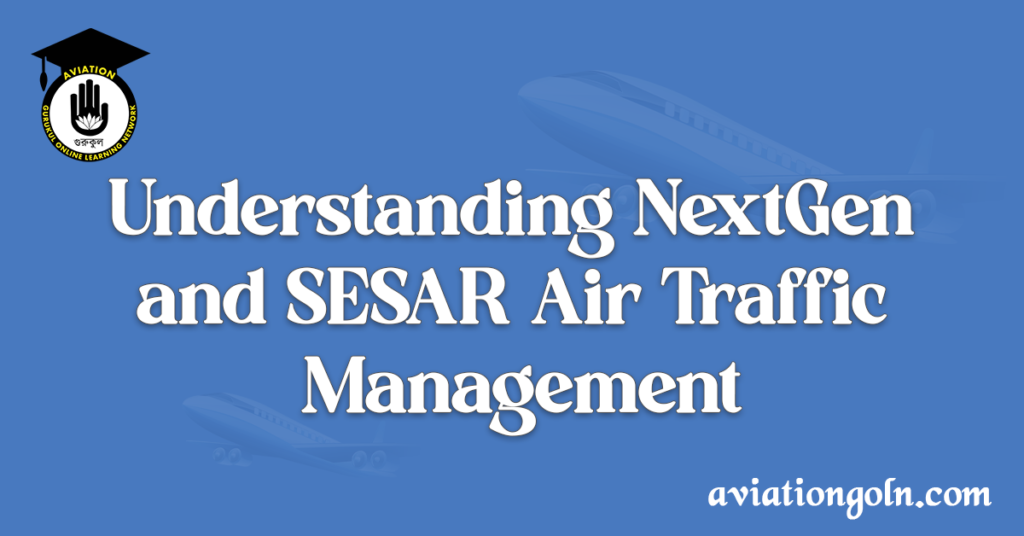The global aviation industry is currently undergoing a transformation like never before. As air traffic continues to grow, existing air traffic management (ATM) systems are proving inadequate to handle the increasing demand. Both in terms of capacity and efficiency, there’s a pressing need to upgrade and modernize these systems. Two of the most prominent initiatives in this direction are the Next Generation Air Transportation System (NextGen) in the United States and the Single European Sky ATM Research (SESAR) in Europe. Both these initiatives aim to overhaul their respective air traffic systems by harnessing the power of modern technology and cutting-edge research.
Understanding NextGen and SESAR Air Traffic Management
1. NextGen: The Future of U.S. Air Traffic Management
The NextGen initiative is a multi-billion dollar investment by the U.S. Federal Aviation Administration (FAA) aimed at transitioning from the traditional ground-based ATM system to a satellite-based system.
1.1. Key Components of NextGen
- Automatic Dependent Surveillance-Broadcast (ADS-B): Replacing the traditional radar technology, ADS-B allows aircraft to determine their position using satellite navigation and broadcast it to nearby aircraft and air traffic control stations. This not only enhances the real-time position accuracy but also provides more data to controllers.
- Performance-Based Navigation (PBN): This system allows aircraft to fly on any path within the coverage of ground or space-based navigation aids. It enhances efficiency, capacity, and flexibility of operations, allowing for more direct routes and optimized flight paths.
- System Wide Information Management (SWIM): SWIM is like the internet for aviation. It offers real-time data-sharing capabilities among all aviation stakeholders, from airlines to air traffic controllers to the military.
- Data Comm: This aims to transition from the traditional voice communication between pilots and air traffic controllers to a digital communication system, improving efficiency and reducing the chances of miscommunication.
1.2. Benefits of NextGen
- Safety: Enhanced monitoring, real-time data sharing, and advanced navigation systems considerably reduce the risk of accidents.
- Efficiency: By optimizing flight paths and reducing delays, NextGen ensures that flights are more fuel-efficient, leading to reduced emissions and cost savings for airlines.
- Capacity: NextGen can handle more aircraft in the sky at once, thereby meeting the growing demand without overburdening the system.
- Environmental Impact: Reduced emissions and quieter flight paths have a lower environmental footprint.
2. SESAR: The European Answer to Modern Air Traffic Management
Just as the U.S. recognized the need to revamp its air traffic system, Europe initiated SESAR, a collaborative project aimed at harmonizing and modernizing European air traffic management.
2.1. Key Components of SESAR
- Flight Path Management: SESAR aims to allow pilots to select the best operational trajectory, ensuring optimal fuel consumption and reduced flight times.
- Aeronautical Data Exchange: A secure, network-centric approach to data-sharing enhances interoperability among European countries and optimizes airspace use.
- Airport Operations Management: Integrating airport operations into the broader European network ensures smoother airport operations, reducing ground and air delays.
- Digital Communications: Similar to NextGen’s Data Comm, SESAR promotes the use of digital communication for clearer, faster, and more efficient exchanges.
2.2. Benefits of SESAR
- Interoperability: SESAR ensures that all European countries can work seamlessly together, optimizing the vast European airspace.
- Safety: Advanced surveillance and communication systems significantly reduce risks.
- Environment: By promoting efficient flight paths and reducing delays, SESAR aims to reduce the aviation sector’s carbon footprint.
- Capacity: SESAR’s systems can accommodate the growing number of flights in Europe without compromising on efficiency or safety.
3. Comparison: NextGen vs. SESAR
While both NextGen and SESAR aim to revolutionize their respective air traffic systems, there are differences based on regional challenges and priorities.
- Scope: While NextGen is primarily focused on the U.S., SESAR has the added challenge of ensuring interoperability among the many member states of the European Union.
- Technological Differences: While there are many similarities in the technologies being adopted, specific systems and standards may differ based on regional requirements.
- Implementation Timeline: Given the complexities of coordinating among European countries, SESAR’s implementation might face different challenges compared to the U.S-centric NextGen.
4. Challenges Ahead
No transformation is without its challenges. Both NextGen and SESAR face hurdles like:
- Funding: These are expensive projects, and ensuring consistent funding over the years is crucial.
- Stakeholder Buy-In: With so many stakeholders involved, from airlines to pilots to governments, getting everyone on board and ensuring smooth coordination is a monumental task.
- Technological Integration: Integrating new technologies with existing systems, especially in older aircraft, can be complex.
- Security Concerns: With increased digitalization comes the challenge of cybersecurity. Ensuring these new systems are hack-proof is paramount.
5. Conclusion
NextGen and SESAR are monumental steps in the evolution of global aviation. While they represent the future of air traffic management in the U.S. and Europe respectively, their success will likely inspire similar endeavors worldwide. As air traffic continues to grow, these initiatives ensure that the skies remain safe, efficient, and environmentally friendly. They are not just about new technologies but about envisioning a brighter, more connected future for global aviation.
See more:

